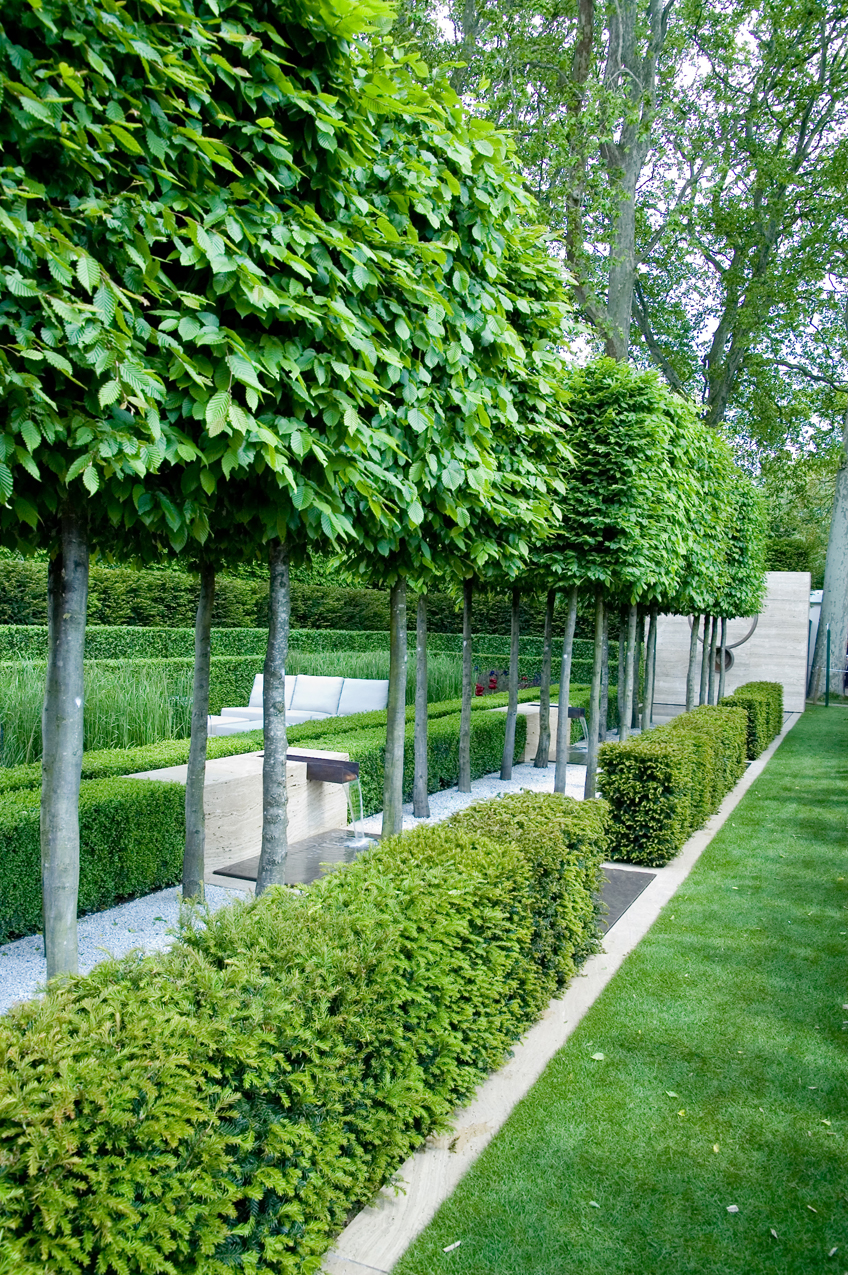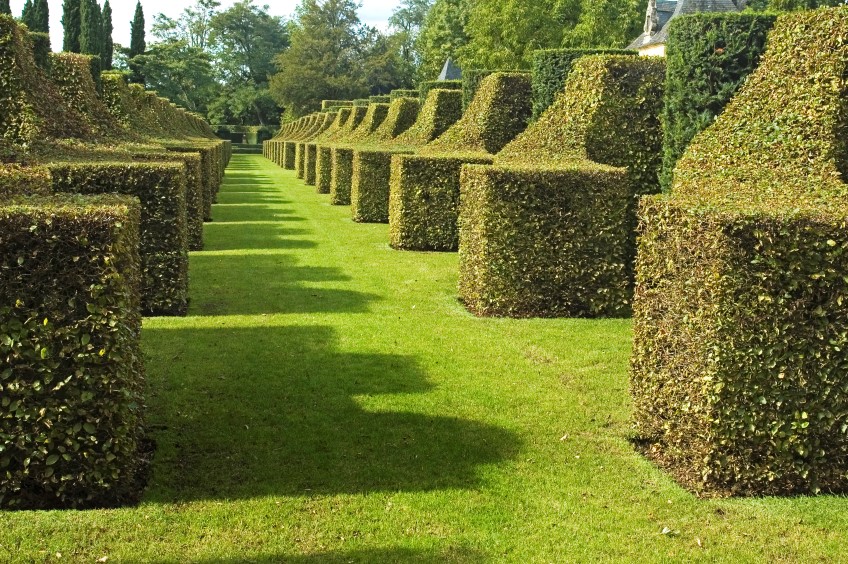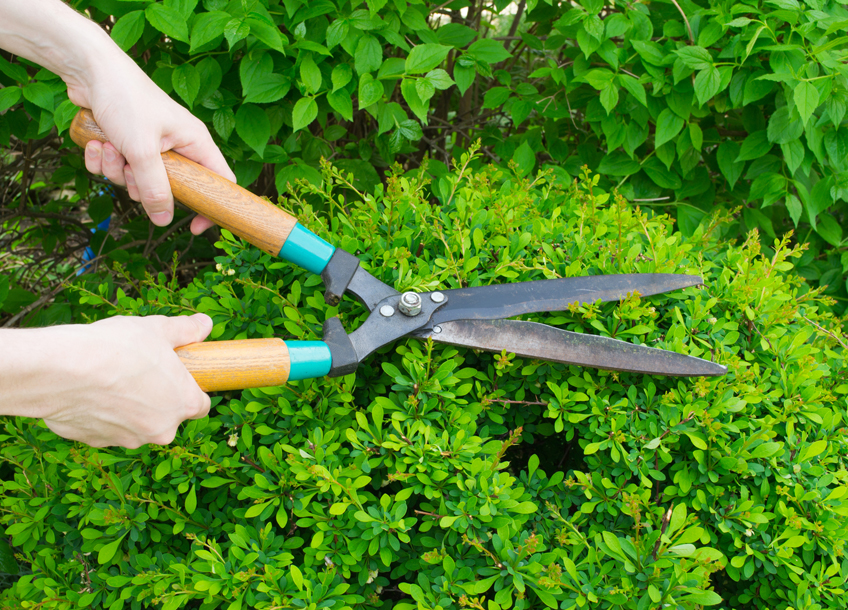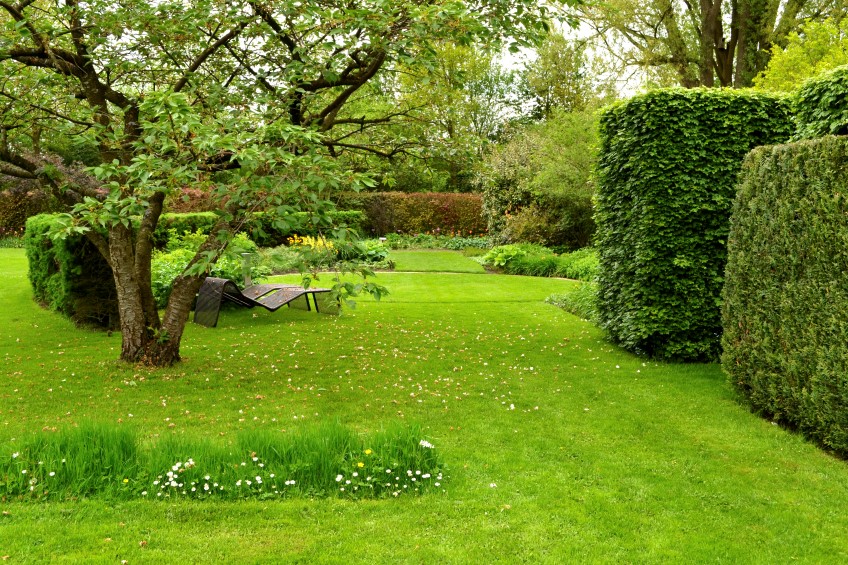A hedge is many things. It can define areas of the garden; shield you from the curiosity of passersby; block ugly intrusions into your view; protect your privacy; offer favourite plants a green backdrop against which to dazzle; or simply give your garden a nestling sense of enclosure and cosy comfort. Here Graham Ross answers the most-asked questions on hedge cultivation and care.
Is there a rule of thumb for working out spacing when you are planting a new hedge?
A good general guide is to plant 20-25 per cent of the average width of a free-standing specimen of your chosen plant. For example, Indian hawthorn (Raphiolepsis)
might grow to 2m wide. So 20-25 per cent would see you planting 40-50cms apart to create a hedgerow. Likewise, Grevillea ‘Molly’ grows 3m
wide so should be planted 60cm apart to create a hedge.

A pleached hedge or hedge on stilts provides a high screen. Photo - Monika Pa/Shutterstock.com
What should we look for in a plant suitable for a hedge?
The plant should be slow growing. Fast growers often die quickly and you want a hedge to be a permanent fixture in the garden. Look for small leaves and
twiggy branch growth, which give the best chance of a dense hedge. You’ll also want plants that are tolerant of shallow soils, root competition and
tough conditions, and are able to withstand neglect. It’s surprising how long the list of plants is that ticks all these boxes!
Are there any hedge plants you wouldn’t recommend?
Many gardeners who planted x Cupressocyparis ‘Leylandii’ have lived to regret it. Some of the early plantings in the UK are now 30+m tall! Not
really home hedge material. Also unsuitable is the golden Leylandii, x Cupressocyparis ‘Castlewellan Gold’, which is another very
vigorous tall grower. I’d also suggest you avoid the lillypilly varieties that are susceptible to pimple psyllid insect.
What is the best time to prune hedges?
From the day you plant! Growth varies so you might get away with three or four times a year for a murraya hedge but Cupressus ‘Leylandii’ will
require attention on a bi-monthly basis. Keep pruning regularly to keep a hedge in good condition. Don’t allow bare inner twigs to appear.

A hedge resembles the buttress roots of a old tree. Photo - Pack-Shot/Shutterstock.com
Is there any time of year you should avoid pruning a hedge?
Keep your pruners in the shed when extreme heat or hot windy days are predicted. In fact, pruning during summer is always risky, as hot dry days can burn
tender new foliage. Very low temperatures are also limiting factors on new, young shoots so avoid pruning when frost or snow is predicted.
Are electric pruners okay to use, or is it better to use hand tools?
Hand tools do a great job, especially for smaller hedges, but electric pruners are also terrific. I’ve used an electric Wolfe hedge trimmer for 25 years.
They key to doing a good job is to that all trimmers must be kept sharp to avoid tearing stems. Torn stems encourage disease entry.

Keep pruners sharp and wipe down sap frequesntly. Photo - Yganko/Shutterstock.com
How can you keep a hedge green and thick right down to the ground?
There is a trick to achieving this and luckily it’s easy to follow. Dig a trench to plant your hedge rather than digging individual holes. Fertilise all
soil area equally for even growth. Lightly trim all over on the day of planting and keep trimming new growth to encourage a bushy habit.
What tips do you have for keeping a square hedge really square?
It seems obvious - use a string line. We all know blokes have 20/20 vision like a plumb bob, but a line does helps.
And what about those more organic, lumpy hedges? Can you just make it up as you go along?
Have a plan, even a rough measured guide with stakes placed at intervals with heights marked and trim to them.

Photo - Robin Powell
If you haven’t pruned a hedge for a few years and it’s very out of shape, how hard can you go to get it back into line?
The cure varies for every species as some plants withstand hard pruning and others don’t. For instance Camellia sasanqua, Buxus, Murraya,
Photinia, Viburnum and Elaeagnus can all be pruned heavily and will bounce back, but conifers, grevilleas and banksias don’t
recover reliably after heavy pruning, in fact some will die.
Speaking of death, what is the disease that is causing die-back in some box hedges in European gardens?
Box (buxus) of all types - English, Korean, Japanese etc, - are all susceptible to box blight, which is a debilitating fungal disease. I observed
a very similar disorder at the Ryde School of Horticulture in the 1970s and the disease was officially identified in New Zealand and Europe in the
1990s. There is no registered fungicide control, though Yates Rose Shield, which contains myclobutanil, may help control. Good garden hygiene will
reduce the risk of infection: when pruning wipe shears with methylated spirit between plants. Keep the hedge growing vigorously with adequate feeding.
Text: Graham Ross